If you’re a beginner backpacker looking to embark on your first adventure into the great outdoors, look no further. We have first time backpacking tips for you.
This blog post is here to provide you with essential tips and insights to ensure a successful and enjoyable experience.
Contents
Discover the basics of backpacking, from understanding its appeal for beginners to the benefits it offers.
Learn about the importance of preparation and research before hitting the trails, as well as finding inspiration and motivation to kickstart your backpacking journey.
Whether you’re interested in day hikes or backcountry camping, this guide will equip you with the knowledge and confidence needed for your best backpacking experience yet.

First Time Backpacking Tips
So, you’ve decided to embark on your first backpacking adventure? Congrats! Now let’s make sure you have an amazing experience by providing you with some valuable tips.
Overcoming Common Challenges
Backpacking can come with its fair share of challenges, especially for beginners. Here are a few tips to help you overcome them:
- Start Slow: Begin with shorter trips to get comfortable with the backpacking lifestyle before tackling longer journeys.
- Pack Light: Avoid overpacking by sticking to the essentials and leaving unnecessary items at home.
- Train Your Body: Prepare physically by incorporating exercises that strengthen your legs and core muscles.
Essential Skills for Navigating Terrains
Navigating through various terrains is a crucial skill for any backpacker. Here’s what you need to know:
- Map Reading: Familiarize yourself with reading maps and using a compass to navigate trails effectively.
- Trail Markers: Learn how to identify trail markers such as blazes or cairns, which will guide you along the right path.
- Water Crossing Safety: Understand techniques for safely crossing rivers or streams during your journey.
Choosing the Right Gear
Selecting the appropriate gear is essential for a successful backpacking trip. Consider these tips when making your choices:
- Backpack Fit: Ensure your backpack fits properly and distributes weight evenly across your shoulders and hips.
- Sleeping Bag Comfort: Choose a sleeping bag that suits the climate conditions of your destination and provides adequate comfort.
- Footwear Selection: Invest in sturdy hiking boots or shoes that offer good ankle support and traction on different terrains.
Remember, being prepared is keyYou’ll be well-equipped to tackle any challenges that may arise during your adventure.
Step 1: Planning Your First Backpacking Trip
Before you embark on your first backpacking adventure, it’s crucial to plan everything thoroughly. This will ensure that you have a safe and enjoyable experience.
Here are some important steps to consider when planning your trip:
Understand the importance of thorough planning
Planning is key. It helps you anticipate potential challenges, ensures you have the necessary gear and supplies, and allows for a smoother journey overall.
Select an appropriate destination
When choosing your destination, consider factors such as difficulty level and seasonality.
Pick a trail that matches your fitness level and experience. Research different options and find one that aligns with your preferences.
Utilize useful resources
To gather information about trails, permits, and camping reservations, make use of helpful resources available online or at local outdoor stores.
Websites like AllTrails provide detailed trail descriptions, reviews from other hikers, and maps to help you plan better.
Create a flexible itinerary
While having an itinerary is essential for safety purposes, it’s also important to allow for flexibility during your trip.
Unexpected weather conditions or unforeseen circumstances may require adjustments along the way. Plan checkpoints or milestones but remain open to changes.
By following these steps in planning your first backpacking trip, you’ll be well-prepared for the adventure ahead.
Remember to pack all the necessary gear, plan meals accordingly, estimate costs accurately, and choose a suitable starting point based on your abilities.
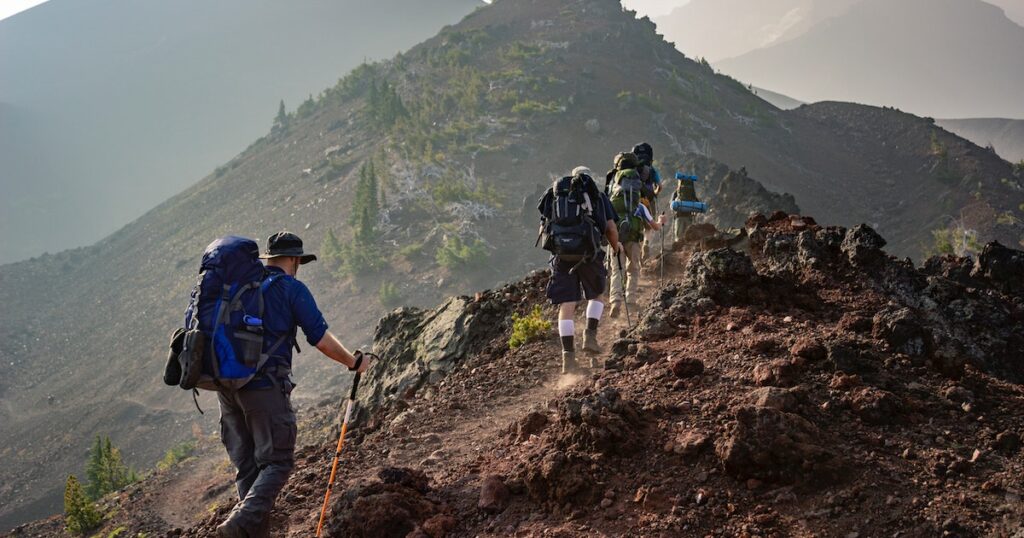
Step 2: Essential Skills and Gear for First-Time Backpackers
To have a successful backpacking trip, it’s important to learn some essential skills and gather the right gear. Here are some key points to keep in mind:
Map Reading, Navigation, and Basic First Aid Knowledge
When you’re out in the wilderness, having basic map reading and navigation skills can be a lifesaver.
Make sure to familiarize yourself with how to read a map and use a compass.
It’s crucial to have some basic first aid knowledge. Learn how to treat common injuries like cuts, blisters, and sprains.
Choosing Appropriate Clothing, Footwear, and Equipment
The weather can change quickly when you’re backpacking, so it’s important to choose clothing that suits different conditions.
Invest in good quality base layers that wick away sweat and keep you warm.
Don’t forget about proper footwear – make sure you have sturdy hiking boots or shoes that provide ankle support.
In terms of equipment, there are a few essentials you’ll need.
A reliable tent will protect you from the elements while sleeping bags designed for camping will keep you warm at night.
Cooking equipment like lightweight stoves and pots are necessary for preparing meals on the trail.
And don’t forget a water filter or purification tablets to ensure safe drinking water.
Packing Techniques for Efficiency
When packing for your backpacking trip, it’s important to maximize space while minimizing weight.
Roll your clothes tightly or use compression sacks to save space in your backpack.
Pack items strategically based on how often you’ll need them – things like snacks or rain gear should be easily accessible.
Remember that every ounce counts when carrying your gear on your back for long distances!
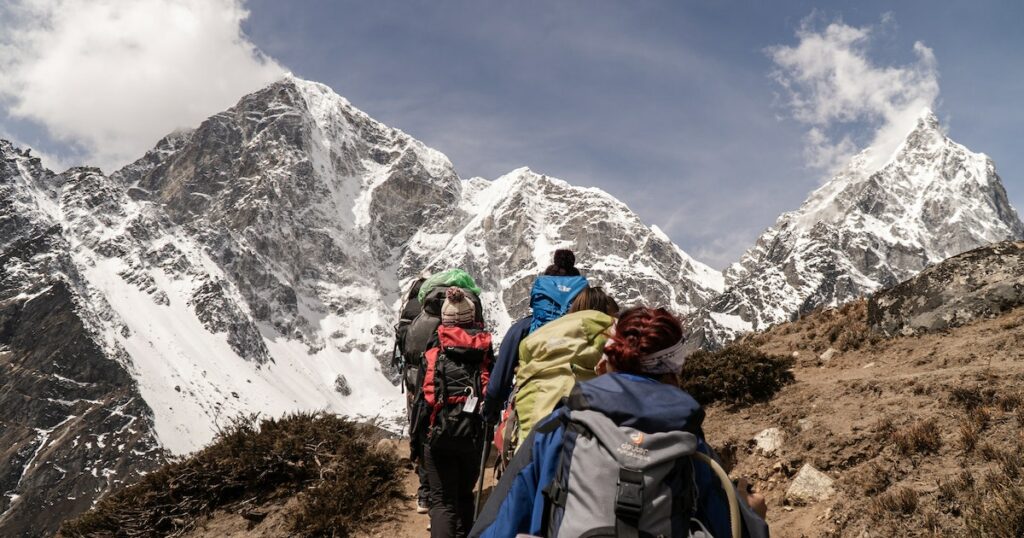
Step 3: Avoiding Common Mistakes as a Rookie Backpacker
To ensure a smooth and enjoyable backpacking experience, it’s important to be aware of common mistakes made by beginners and learn how to avoid them.
Here are some tips to help you navigate your first backpacking adventure like a pro:
Managing Expectations for Mileage Covered Per Day
When planning your hiking trips, it’s crucial to manage your expectations regarding the distance you can cover each day.
Many rookie backpackers overestimate their abilities and end up pushing themselves too hard, leading to exhaustion or even injuries.
Take into account factors such as terrain difficulty, elevation gain, and the weight of your pack when estimating how far you can hike in a day.
Practicing Leave No Trace Principles
As an outdoor enthusiast, it’s essential to practice Leave No Trace principles.
These guidelines promote responsible enjoyment of natural spaces while minimizing our impact on the environment.
Remember to leave nature as you found it by properly disposing of waste, staying on designated trails, and respecting wildlife habitats.
Handling Wildlife Encounters and Understanding Hazards
While out on the trail, it’s important to be prepared for wildlife encounters and potential hazards.
Educate yourself about the wildlife in the area you’ll be exploring and learn how to safely coexist with them.
Familiarize yourself with potential hazards such as poisonous plants or dangerous weather conditions so that you can take appropriate precautions.
By being mindful of these common mistakes and taking proactive measures to prevent them.
You’ll set yourself up for a successful backpacking experience filled with adventure and memories that will last a lifetime.
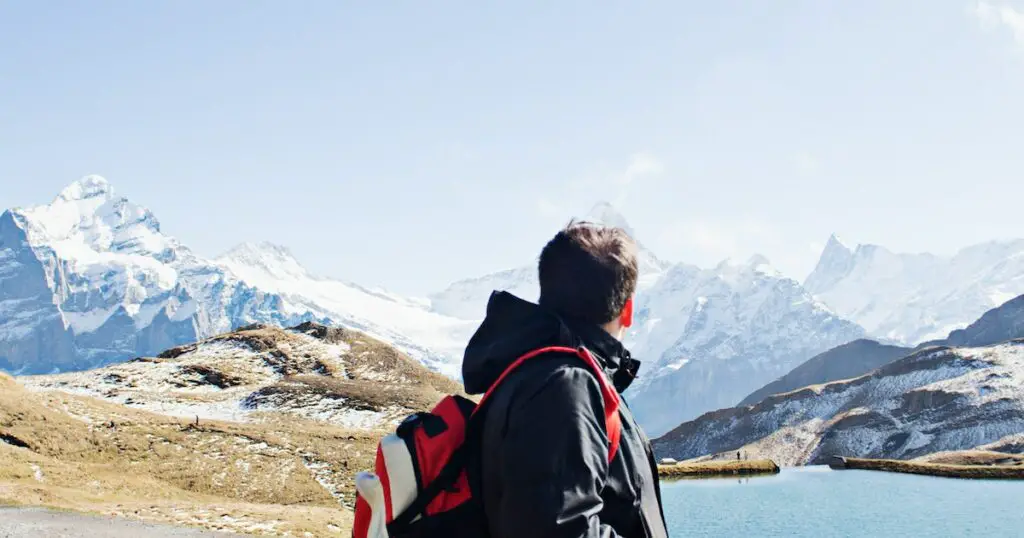
Step 4: Choosing the Right Trail and Route for Your Adventure
To have a successful backpacking trip, it’s crucial to choose the right trail and route that suits your needs. Here are some tips to help you make the best decision:
Match your fitness level, time availability, and personal preferences
Consider your fitness level when selecting a trail. If you’re a beginner, opt for easier trails with less elevation gain and shorter distances.
Take into account how much time you have available for your adventure. Some trails may require several days to complete, while others can be done in just a few hours.
Also, think about what kind of scenery or activities you prefer – whether it’s mountain views, waterfalls, or wildlife sightings.
Utilize resources for researching trails
There are various resources available to help you research hiking trails. Guidebooks provide detailed information about popular trails and their difficulty levels.
Online forums allow you to connect with experienced hikers who can offer recommendations and advice.
Hiking apps like AllTrails provide maps, reviews, and photos of different trails.
Consider important factors when choosing a route
When selecting a route, consider factors such as elevation gain (how steep the trail is).
Terrain difficulty (rocky or smooth), water sources along the way (for drinking and cooking), and camping options (if overnight stays are necessary).
These factors will impact the overall experience of your backpacking adventure.
Assess trail conditions and weather forecasts
Before embarking on your journey, check trail conditions to ensure they are safe and accessible.
Look out for any closures or warnings due to weather conditions or maintenance work.
Always check the weather forecast so you can prepare accordingly with appropriate gear and clothing.
By following these tips and taking into account your fitness level, preferences, trail conditions, and weather forecasts;
you’ll be well-prepared to choose the right trail and route for an enjoyable backpacking adventure.
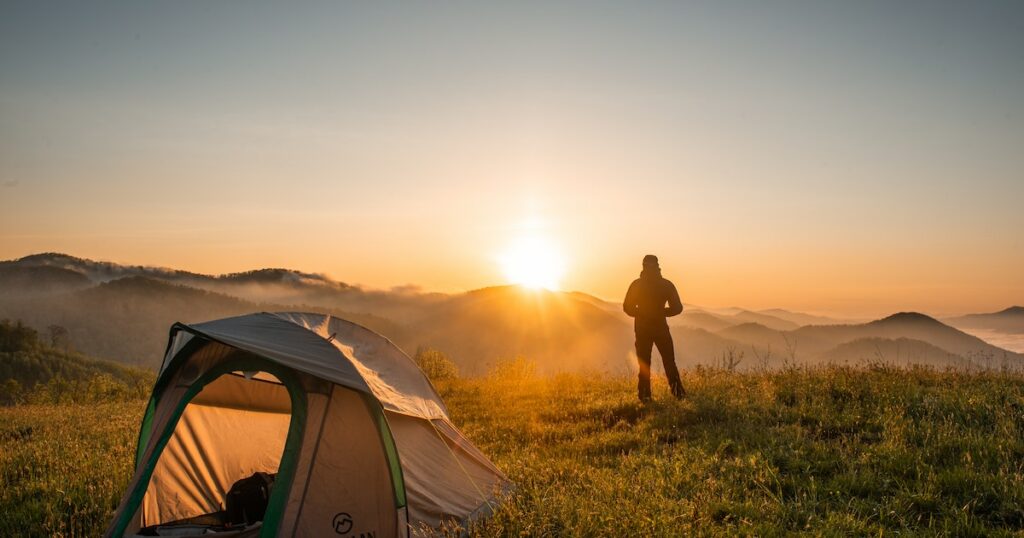
Step 5: Packing Smartly and Light for Your Backpacking Trip
To have a successful backpacking adventure, it’s crucial to pack smartly and keep your backpack light. Here are some tips to help you do just that:
Efficient Packing Techniques
- Learn efficient packing techniques to minimize weight without compromising essential items.
- Roll your clothes instead of folding them to save space.
- Use compression sacks or packing cubes to organize your gear and maximize space.
Organizing Your Gear
- Discover tips for organizing gear inside your backpack to optimize accessibility during the trip.
- Pack frequently used items in easily accessible pockets or the top compartment of your backpack.
- Place heavier items closer to your back for better weight distribution.
Carrying Proper Nutrition
- Understand the importance of carrying proper nutrition while keeping pack weight manageable.
- Choose lightweight, high-calorie foods like dehydrated meals, energy bars, and nuts.
- Consider using freeze-dried fruits and vegetables as they are lightweight and provide essential nutrients.
Lightweight Alternatives
- Get insights into lightweight alternatives for common backpacking gear items.
- Opt for a lightweight sleeping bag or quilt that offers warmth without adding extra weight.
- Invest in a lightweight sleeping pad that provides insulation and comfort without being bulky.
Remember,Less is more. Leave unnecessary items behind and focus on the essentials.
By following these tips, you’ll be able to enjoy your adventure without being weighed down by a heavy pack.
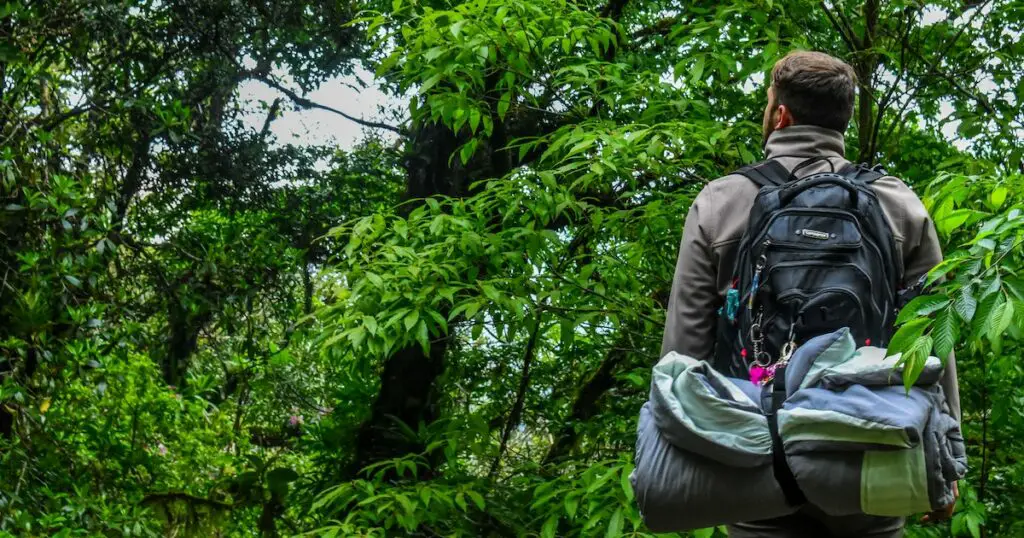
Final Tips and Encouragement for Beginner Backpackers
Congratulations on completing the sections that covered first-time backpacking tips, planning your trip.
Essential skills and gear, avoiding common mistakes, choosing the right trail, and packing smartly!
By now, you should have a solid foundation of knowledge to embark on your first backpacking adventure with confidence.
Remember to stay positive and embrace the challenges that may arise along the way.
With determination and preparation, you’ll create unforgettable memories while exploring the great outdoors.
As a final word of advice, always prioritize safety during your backpacking journey.
Research the area you’ll be visiting thoroughly, check weather conditions beforehand, and inform someone about your itinerary.
Don’t forget to respect nature by leaving no trace behind and following any regulations or guidelines set by park authorities.
Now it’s time to put your newfound knowledge into practice!
Start planning your trip, gather your gear, pack wisely, and get ready for an incredible experience in the wilderness.
FAQs
1. What are some essential items I should pack for my first backpacking trip?
Some essential items to pack include a tent or shelter system, sleeping bag and pad, cooking equipment (stove, fuel), water filtration system or purification tablets/bottle, appropriate clothing layers (including rain gear), navigation tools (map/compass/GPS), first aid kit, headlamp/flashlight with extra batteries, food storage containers/bear canister (if necessary), and personal hygiene products.
2. How do I choose the right trail for my first backpacking adventure?
When selecting a trail for your first backpacking adventure, consider factors such as distance (start with shorter hikes initially), elevation gain/loss (gradual inclines are recommended for beginners), difficulty level (choose trails suitable for your fitness level), accessibility to water sources/campsites/restrooms along the route (especially important if you’re a beginner), and the overall scenery and environment that align with your preferences.
3. How can I prevent blisters while backpacking?
To prevent blisters, ensure you have properly fitting footwear, break in your shoes or boots before the trip, wear moisture-wicking socks, use moleskin or blister prevention patches on areas prone to friction, keep your feet clean and dry whenever possible, and take breaks to air out your feet during long hikes.

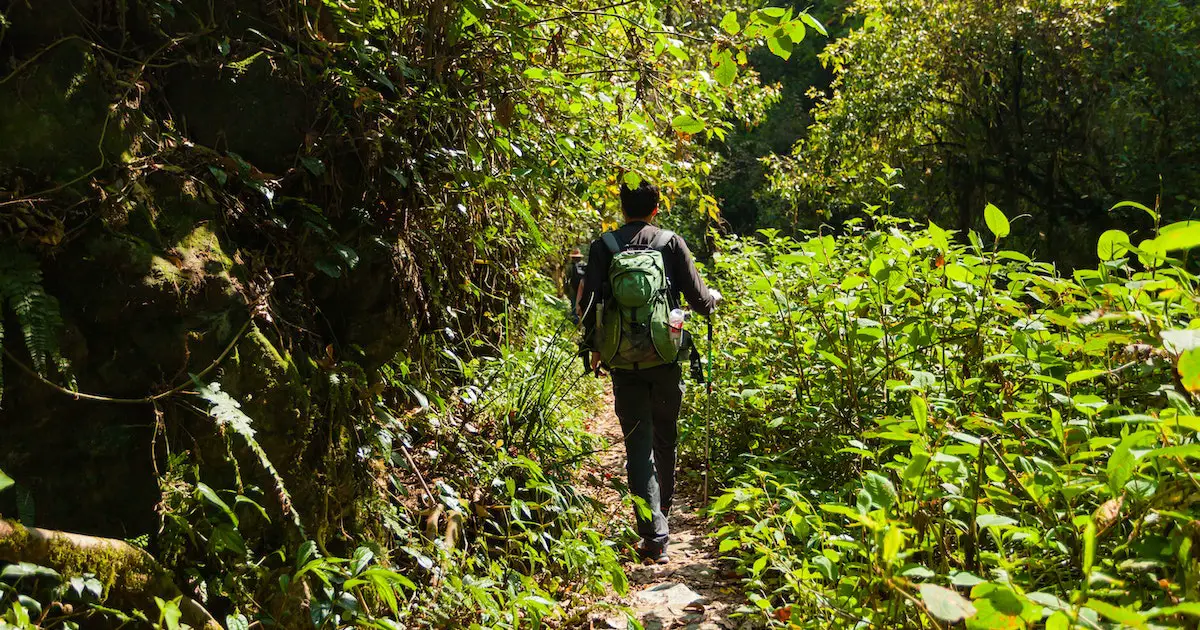
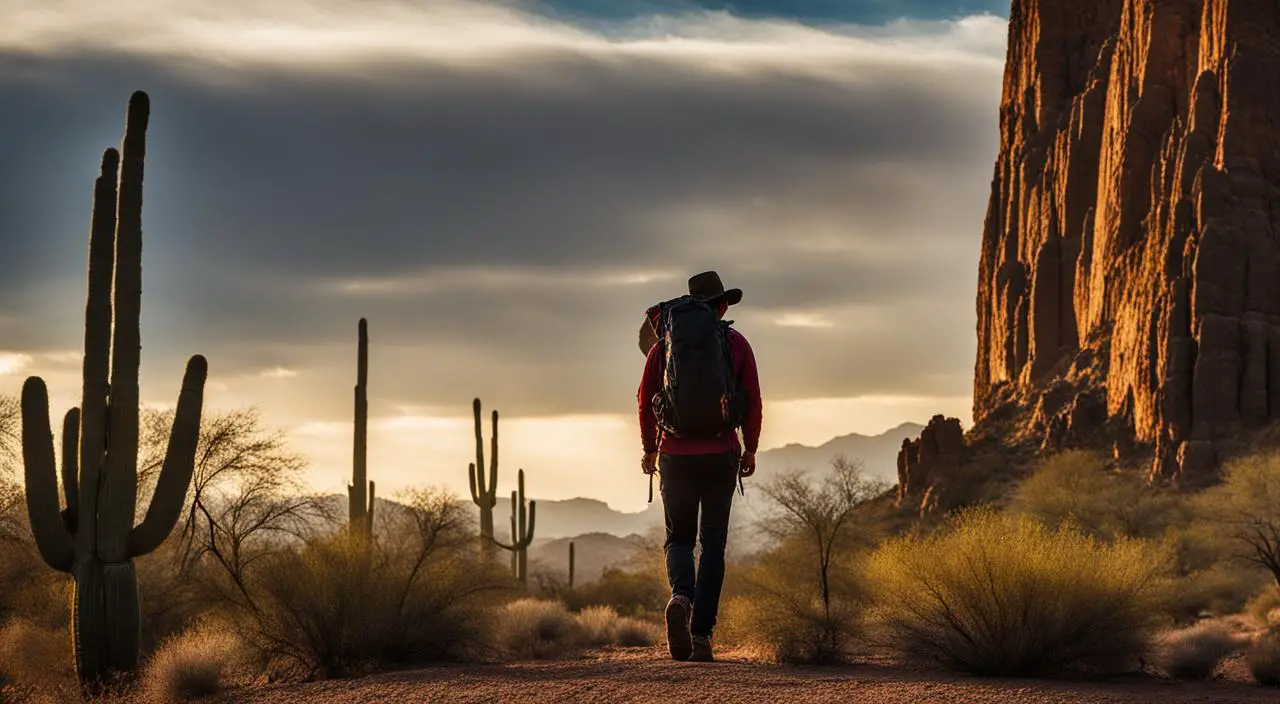
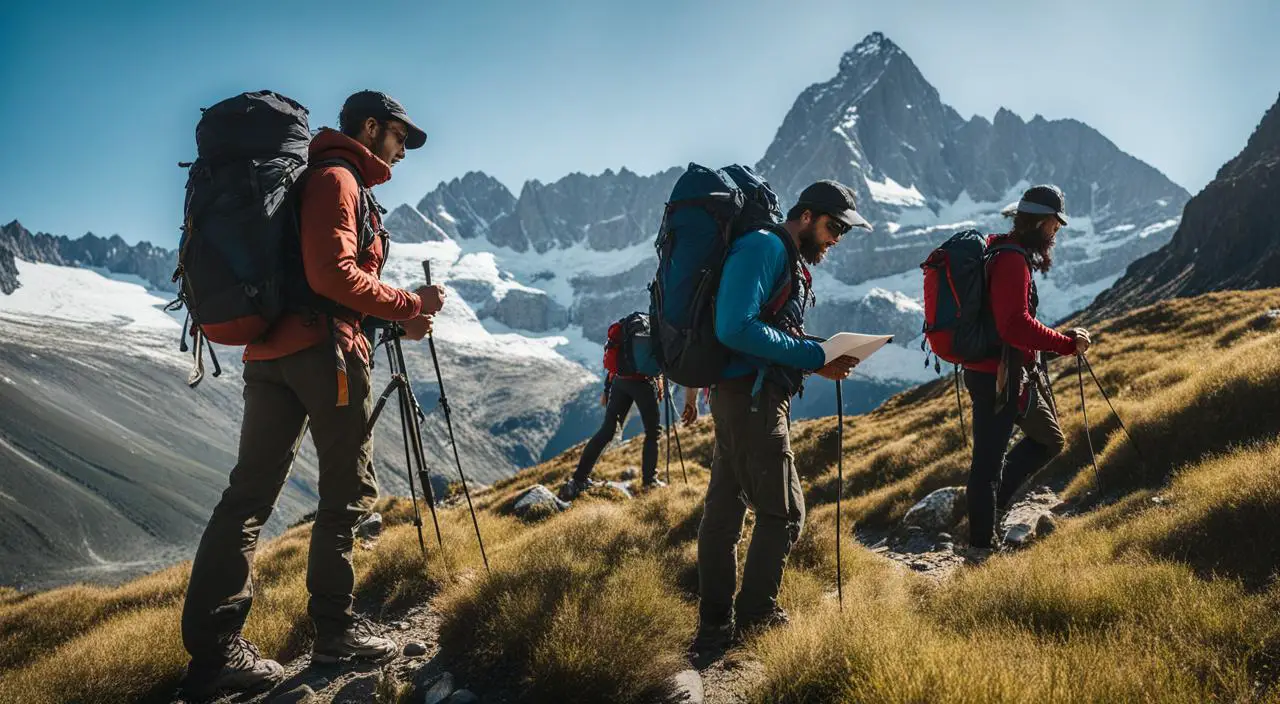
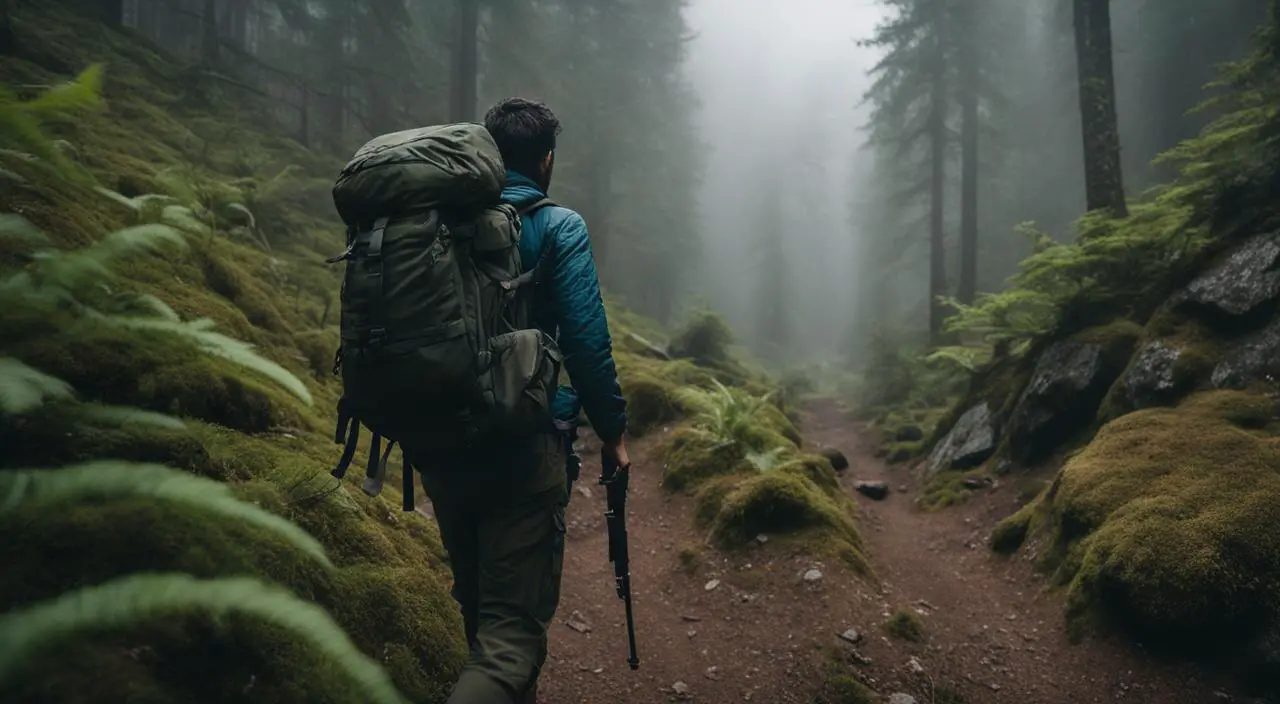
Leave a Reply